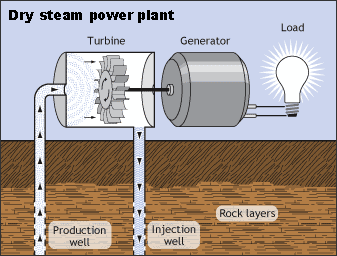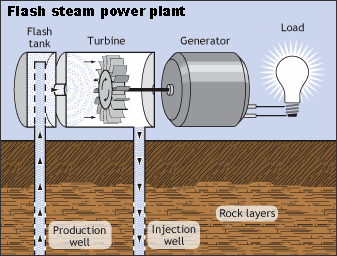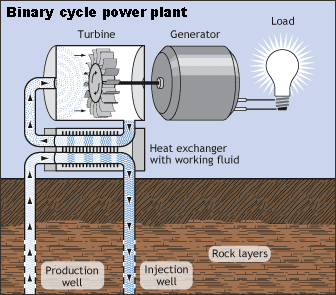Almost all types of power sources on the ground have the same process/mechanism such as nuclear power, hydropower, coal power, etc. because they used a generator to generate electricity to be transferred to the power lines.
In this blog, let us explore the science behind geothermal energy. Perhaps you already knew this when you were schooling before. Now, let us try to refresh again and it could be a piece of additional information for you when you find something new along the way.

Geothermal Energy is a type of renewable energy that comes from the heat of the earth’s core. The word geothermal comes from the Greek words “geo” which means “earth” and “therme” which means “heat.”
When you say renewable energy, it means energy that is sustainable or endless like energy from the wind, sun, or water.
The temperature of the earth’s core is ranging from 4,400° Celsius (7,952° Fahrenheit) to about 6,000° Celsius (10,800° Fahrenheit). Other scientists said that is almost the same as the temperature of the sun but it is still in debate until now since the sun is more complicated and not easy to test.
What are the countries that use Geothermal Energy?
The United States of America is currently the global leader of geothermal power. There are over 80 countries around the world use this type of energy and some of them are expanding their power capacities such as Kenya, Turkey, and Indonesia.
The 3 main types of geothermal energy.
There are three main types of geothermal energy plants that generate power but they differ very slightly in processing. Let us see how they work.
- Dry Steam Power Plant.

It is the most common type of geothermal power plant today.
a. There are wells which are drilled about 1 or 2 miles deep on the ground of the earth and the water on a reservoir will be heated by magma to steam and pump through the pipes up to the surface.
b. The steam will make the turbine spin quickly which is connected to a generator.
c. The steam condenses into water where it is pumped back into the ground through the injection well.
d. The generator will transfer its generated power to power lines and pass it to the consumers.
- Flash Steam Power Plant.

a. There are wells which are drilled about 1 or 2 miles deep on the ground of the earth and the water on a reservoir will be heated by magma to steam and pump through the pipes up to a tank which has cooler water and creates rapid evaporation.
b. The rapid vapor pressure will make the turbine spin quickly which is connected to a generator.
c. The vapor condenses into water where it is pumped back into the ground through the injection well.
d. The generator will transfer its generated power to power lines and pass it to the consumers.
- Binary Cycle Power Plant.

This type of power plant uses two types of fluids — the cold and hot fluids.
a. There are wells which are drilled about 1 or 2 miles deep on the ground of the earth and the water on a reservoir will be heated by magma to steam and it will not directly contact the turbine but will go through a heat exchanger and heats the cold water.
b. The rapid vapor pressure will make the turbine spin quickly which is connected to a generator.
c. The steam condenses into water where it is pumped back into the ground through the injection well. The cold fluid which was heated by the hot water will go back into the heat exchanger and can be used again.
d. The generator will transfer its generated power to power lines and pass it to the consumers.
What are the Advantages and Disadvantages of Geothermal Energy?
Advantages:
- It is reliable.
Compared to other types of energy sources like wind or solar, geothermal energy is constant and not dependent on the weather. Thus, it can give power for centuries and beyond.
- Geothermal Power Plant requires less space.
Its space is lesser than the other types of energy such as Coal Energy and Nuclear Energy.
- Less System Maintenance.
Geothermal Power Plant has fewer movable parts than other power sources. In this case, it has less system maintenance and could save financially for the benefit of the management and the country’s economy.
- It can give a stable price for the consumers.
Since it doesn’t use fossil fuel and depends on the core of the earth which is free and endless, its price for the consumers can is stable.
Disadvantages:
- High-cost Construction.
It needs huge investment to build a geothermal power plant. The installation of the pipes and other equipment deep-down the earth is costly because these materials are not ordinary and can withstand a very high temperature. In addition to the expenses, it requires highly-skilled workers to explore and drill the exact location.
- It contributes to the ecological problem.
Geothermal energy doesn’t need to burn coal or any materials to generate electricity but it still emits greenhouse gases like carbon dioxide, hydrogen sulfide, ammonia, and methane. Nevertheless, it releases just a small amount of those gases.
- Earthquake problem.
The stability of its structure is one of the major concerns. There are sometimes underground shakings and it might lead to the materials below damage will be hard to fix with.
- Geographical Limitations.
It needs thorough research before setting up the plant. The location should have the fewest seismic tremors and could produce heat for a long period of time.
☎️ For more information and inquiries:
🌐 Website: www.mikegyver.com
📕 Blog: www.mikegyver.com/blog
✉️ Email: [email protected]
▶️ Youtube: https://www.youtube.com/channel/UC0QlBR1c1pjEI3O_kcKfb8w
Images Sources:
https://www.eia.gov/energyexplained/geothermal/geothermal-power-plants.php




4 Comments